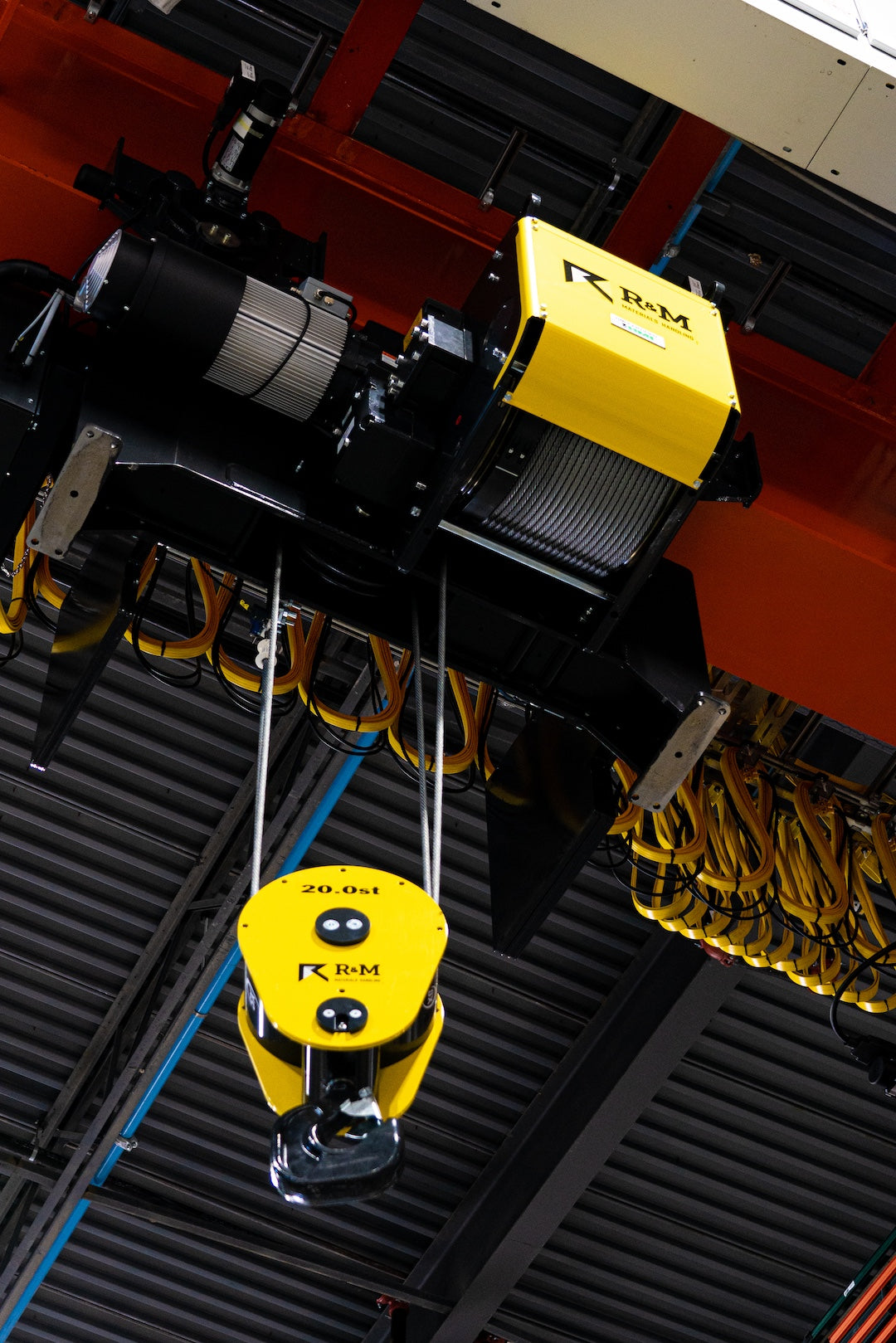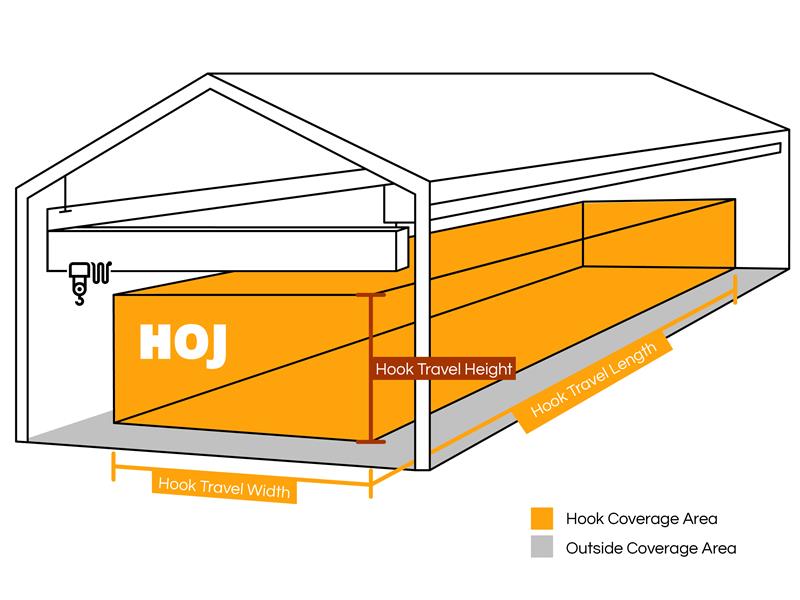Your Cart is Empty

Forklifts: Buying vs. Leasing vs. Renting
In today’s competitive marketplace, the efficiency of your warehouse or distribution center is crucial to your business's success. With more than 60 years of experience in the material handling industry, Hoj Innovations is uniquely positioned to help companies like yours make the best decisions to solve your long and short-term challenges.
Selecting the right material handling solutions, such as forklifts, is not just about improving day-to-day operations; it’s about making strategic decisions that will impact your company’s operational costs, productivity, and adaptability in the long run.
Businesses have three primary avenues for acquiring material handling equipment: buying, leasing, and renting. Each option offers distinct advantages and potential drawbacks, depending on your specific business needs, financial circumstances, and long-term goals.
- Buyingallows for ownership and long-term cost savings but requires significant upfront investment.
- Leasingprovides access to the latest equipment with less capital expenditure and includes maintenance but can lead to higher costs over time and comes with contractual obligations.
- Rentingoffers the greatest flexibility and is ideal for meeting short-term demands or seasonal spikes without long-term commitments, though it can be the most costly option if used as a long-term solution.
The purpose of this blog post is to delve deeper into these options, helping decision-makers like you understand the comprehensive benefits and potential limitations of each. By evaluating buying, leasing, and renting against the backdrop of your unique operational requirements, we aim to empower you with the knowledge to make informed decisions that optimize both your operational efficiency and financial health.

Buying Forklifts and Material Handling Equipment
Pros:
- Long-term Cost Savings: Purchasing equipment outright often results in lower total cost of ownership over the long term. Once the initial investment is recouped, the equipment continues to provide value without ongoing lease payments or rental fees.
- Ownership and Asset Accumulation: Ownership means the equipment becomes a business asset, contributing to the company's overall financial valuation. This can be beneficial for balance sheet purposes and when seeking financing or business opportunities.
- Flexibility in Customization and Usage: Owning your equipment allows you to customize machinery as needed to fit specific tasks or operational environments without restrictions often imposed by lease or rental agreements. Additionally, there are no usage limits, so equipment can be operated as extensively as needed.
- Potential Tax Benefits through Depreciation: Purchasing equipment can offer tax advantages since it can be depreciated over its useful life, potentially reducing taxable income each year it is in use.
Cons:
- High Initial Capital Expenditure: The upfront cost of purchasing new or even used equipment can be substantial, impacting cash flow and limiting financial flexibility for other investments or operational expenses.
- Maintenance and Repair Responsibilities:Owning equipment means taking on the responsibility for its maintenance and repairs, which can be costly and require significant management attention. Unexpected breakdowns can lead to further financial and operational disruptions. For example, if you have a Propane-powered forklift, you will usually need to refill the LP propane tanks that it uses as fuel.
- Risk of Technological Obsolescence:As technology advances, equipment purchased today may become outdated more quickly than anticipated, potentially necessitating earlier replacement or upgrades than planned.
- Less Flexibility to Upgrade or Change Equipment: When you own equipment, switching to newer or different models involves selling the existing assets and purchasing new ones, which can be a time-consuming and costly process compared to simply updating a lease or returning rented items.

Leasing Forklifts and Material Handling Equipment
Pros:
- Lower Upfront Costs Compared to Buying: Leasingreduces the initial financial burden, as it typically requires a lower upfront payment compared to the full purchase price of new equipment. This can free up capital for other investments or operational needs.
- Regular Upgrades to Newer Models: Leasing agreements often allow businesses to upgrade to newer models at the end of a lease term, ensuring access to the latest technology without the full cost of purchasing new equipment.
- Typically Includes Maintenance and Repairs: Most leases include maintenance and repair services, reducing the operational burden and unpredictability of these expenses. This can help ensure that equipment remains in good working condition without additional costs.
- Easier Budgeting with Fixed Monthly Payments: Leasing involves fixed monthly payments, which makes financial planning and budgeting more predictable. Businesses can accurately forecast their expenses without worrying about variable maintenance costs.
Cons:
- Long-Term Cost Can Be Higher Than Buying: While leasing reduces initial expenses, the cumulative cost of ongoing lease payments can exceed the cost of purchasing equipment outright over an extended period.
- Contractual Obligations – Early Termination Can Be Costly: Leasing contracts come with fixed terms, and terminating a lease early can incur significant penalties. This can be a financial risk if the business’s needs change unexpectedly.
- Limited Customization Options: Leased equipment typically cannot be customized extensively to meet specific operational needs due to restrictions set by the leasing company. This might limit the equipment's effectiveness in certain specialized applications.
- Possible Penalties for Exceeding Usage Terms: Lease agreements often include terms that limit usage (such as the number of hours a machine can operate). Exceeding these limits can result in costly penalties, adding unexpected costs.

Renting Forklifts and Material Handling Equipment
Pros:
- Maximum Flexibility with Short-term Commitments: Rentingoffers unparalleled flexibility by allowing businesses to have equipment only when needed without the long-term commitments required by purchasing or leasing. This can be particularly advantageous for businesses with fluctuating demands.
- Ideal for Temporary or Seasonal Needs: For projects with a limited duration or for seasonal peaks in operations, renting equipment ensures that businesses have the necessary resources without investing in permanent acquisitions.
- Maintenance and Repairs Are Generally Covered: The rental company typically handles maintenance and repairs, reducing the logistical burden on the renting business and ensuring that equipment is always in good working condition.
- No Depreciation Costs or Long-term Financial Commitments: Renting avoids the depreciation costs associated with buying equipment and doesn't tie up capital in long-term financial commitments, providing more liquidity for other business needs.
Cons:
- Most Expensive Option in the Long Term: While convenient for short-term needs, renting can be the most costly approach over an extended period. Frequent or prolonged rentals may result in higher overall costs compared to buying or leasing.
- Limited Availability of Models and Specifications: The specific models or specifications needed may not always be available for rent, potentially forcing businesses to opt for equipment that isn’t perfectly suited to their needs.
- Frequent Changes in Equipment Can Disrupt Operations: Renting different models or units over time may lead to operational inefficiencies, as workers need to adjust to different machinery, and the workflow might need to be altered to accommodate varying equipment capabilities.
- Typically No Equity or Buy-out Options: Unlike leasing, where there is sometimes an option to purchase the equipment at the end of the term, renting provides no equity accumulation or buy-out options, meaning all payments are purely for temporary use.
Factors to Consider When Making Your Decision
Scale and Duration of Your Material Handling Needs:
- Scale: Consider the volume of operations that your equipment will support. Larger scale operations might benefit from owning equipment, while smaller or variable operations might find leasing or renting more advantageous.
- Duration: For long-term needs, purchasing or leasing may be more cost-effective, whereas renting is ideal for short-term or project-based needs. Analyze how long you will need the equipment to determine the most practical acquisition method.
Financial Health and Cash Flow of Your Business:
- Assess your business's current financial health and cash flow stability. Buying requires a significant upfront investment, affecting cash flow, but can be favorable if financial reserves are strong. Leasing or renting may be more suitable for conserving cash or for businesses with tighter budget constraints.
Current and Future Material Handling Requirements:
- Consider both your current and anticipated future needs. If your business is growing or facing potential changes in operational demand, flexibility might be crucial. Leasing provides an option to upgrade to newer models, while renting offers the utmost flexibility without long-term commitments.
Tax and Financial Implications of Each Option:
- Tax Implications: Buying equipment can offer tax benefits such as depreciation, which can offset income and reduce taxes. Leasing payments may also be deductible as a business expense. Evaluate these aspects with a financial advisor to understand which option aligns best with your tax strategy.
- Financial Implications: Each option impacts your balance sheet differently. Purchasing adds assets and possibly debt, leasing affects liabilities and expenses, and renting is a direct expense. Consider how each option affects your financial statements, borrowing capacity, and overall financial health.
Conclusion:
Finding the Right Material Handling Solution with Hoj Innovations
Choosing the right approach to acquire forklifts and material handling equipment is pivotal to maximizing efficiency and managing costs in your warehouse or distribution operations. Whether you decide to buy, lease, or rent, each option comes with its own set of benefits and considerations tailored to different business needs and financial circumstances.
At Hoj Innovations, we understand the complexity of these decisions and are committed to helping you navigate your options to find the best solutions. Our team of experts is ready to provide you with personalized advice, taking into account your specific operational requirements and financial strategies.
Let Hoj Help
Don't let the complexity of choice slow you down. Contact Hoj Innovations today to explore how our material handling solutions can enhance your operations. Let us help you make an informed decision that propels your business forward. Visit our website or call us directly to schedule a consultation and learn more about how we can support your business’s unique needs.








